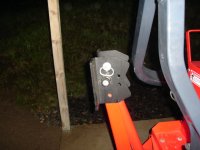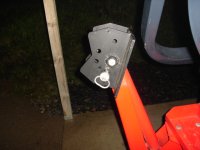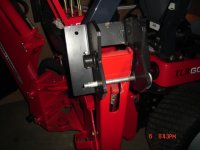tsteahr
Gold Member
- Joined
- Jul 22, 2008
- Messages
- 432
- Location
- CT shoreline
- Tractor
- Massey Ferguson GC2410tlb w/ R1 and Rimguard
Has anyone flipped their stabilizer feet over so the pointy end goes into the ground? The BH on the GC is very strong and has no problem yanking the tractor around. The flat side of the feet are smooth and seem to slide on the ground. I'm wondering if flipping the feet over would give the stabilizers a little bit of bite on the ground and keep the machine in place a little better. They seem to be designed to be flipped over, but I don't remember the manual making any mention of this. I'm a little concerned about the hydraulic cylinder fitting at the end of the stabilizer are getting damaged if I flip the foot over. I'm also thinking I could bolt a couple pieces of channel steel to the feet to have a edge to bite into the ground. Then the fitting would remain protected with the feet in their normal position.
Any thoughts?
Any thoughts?


